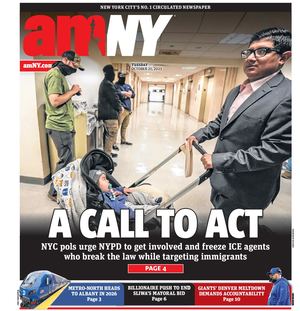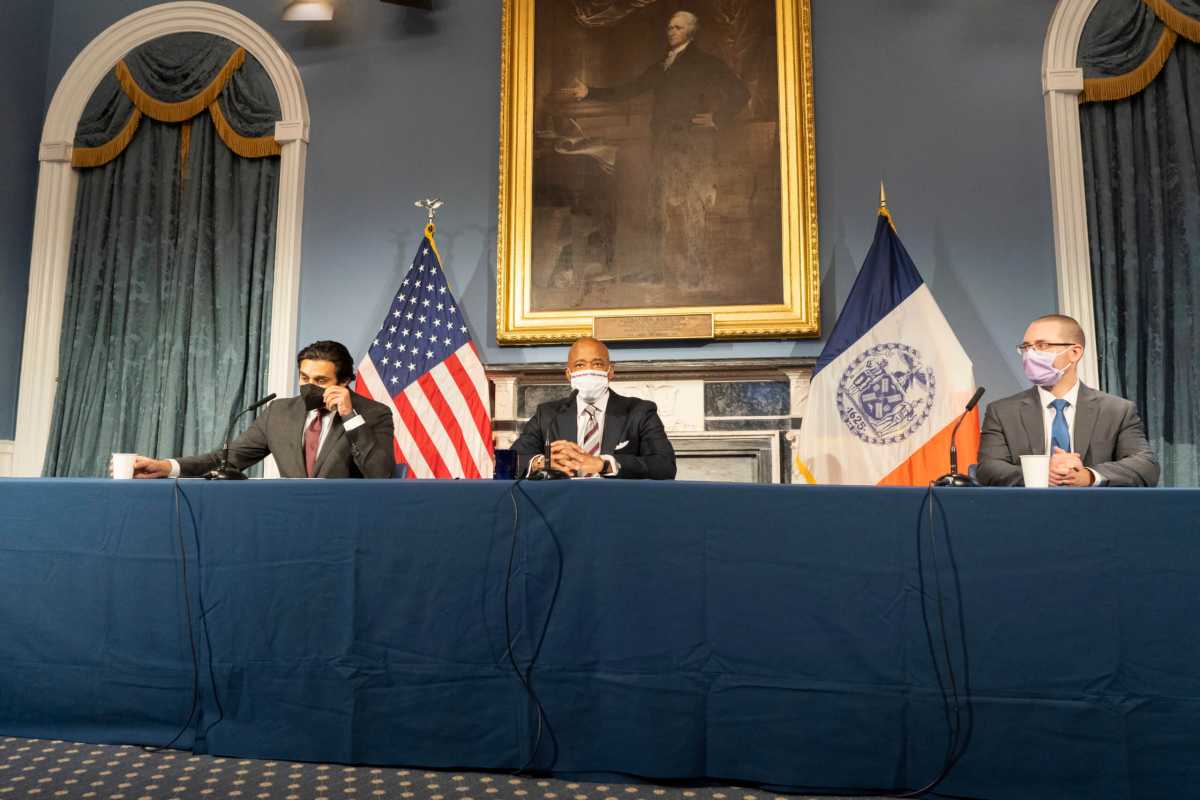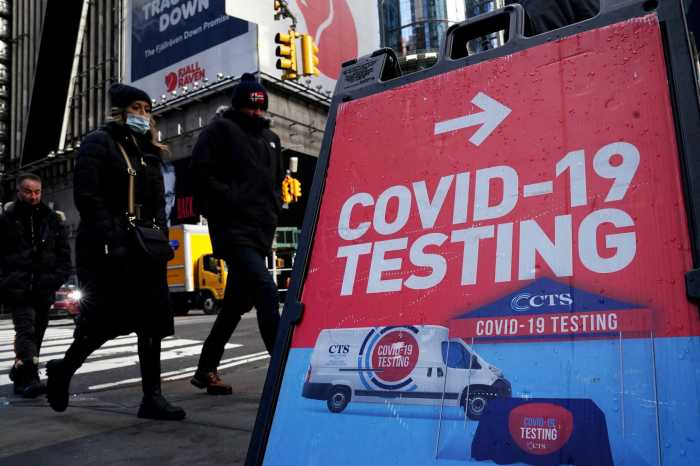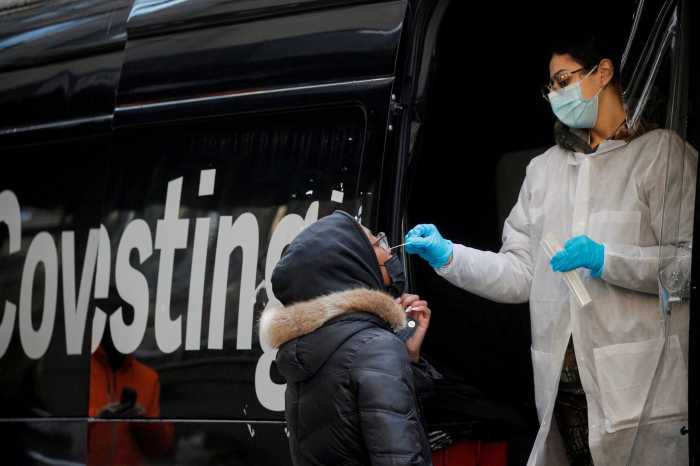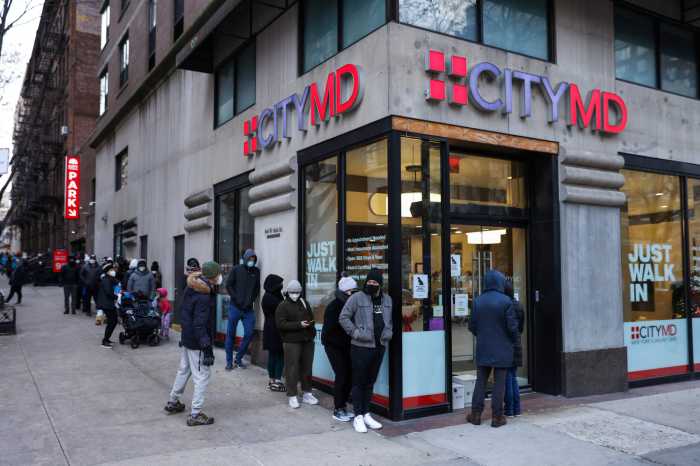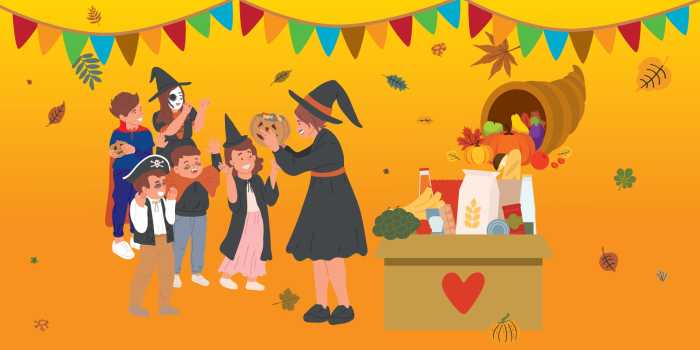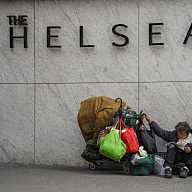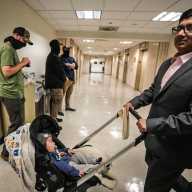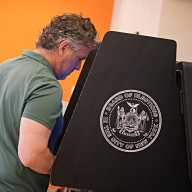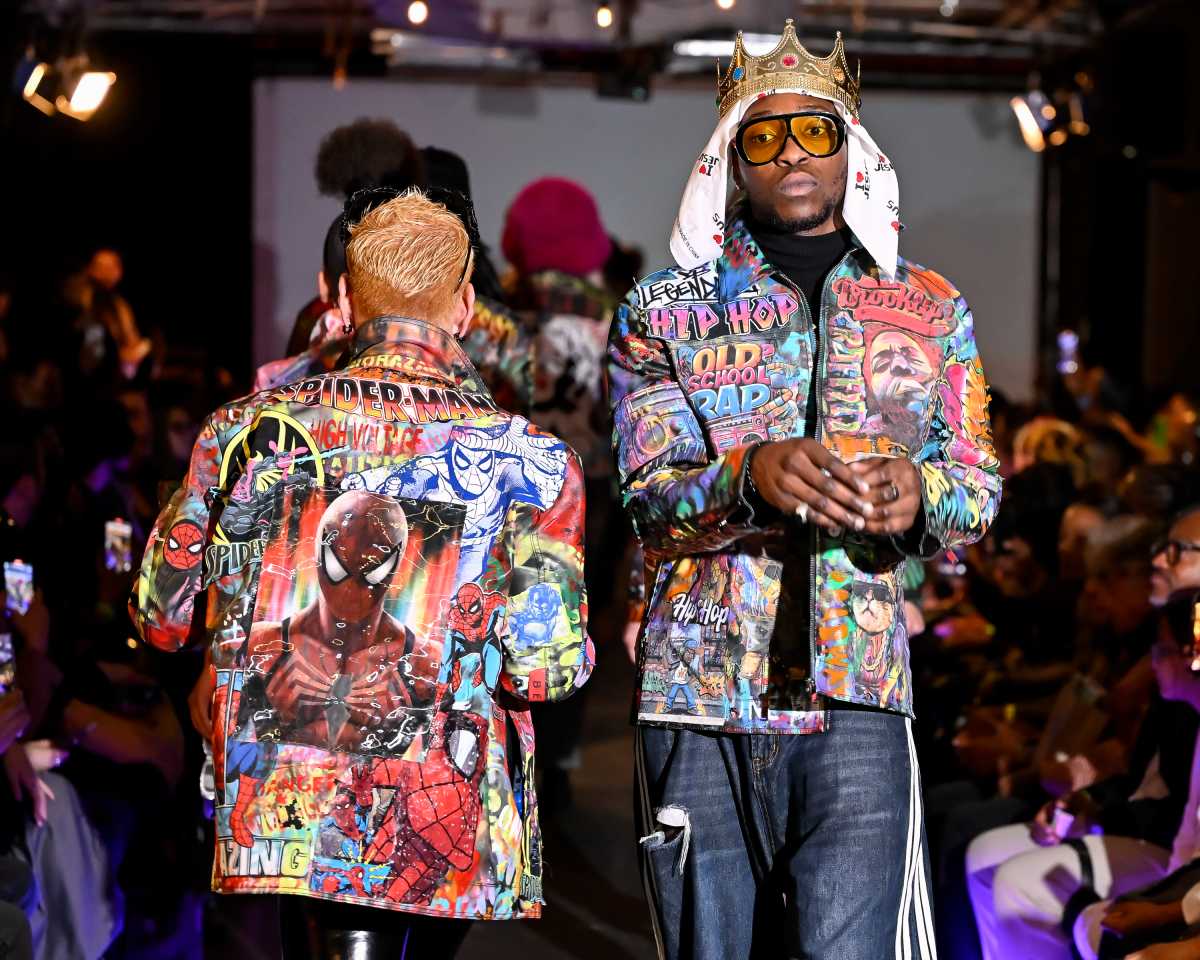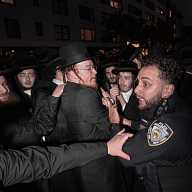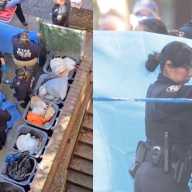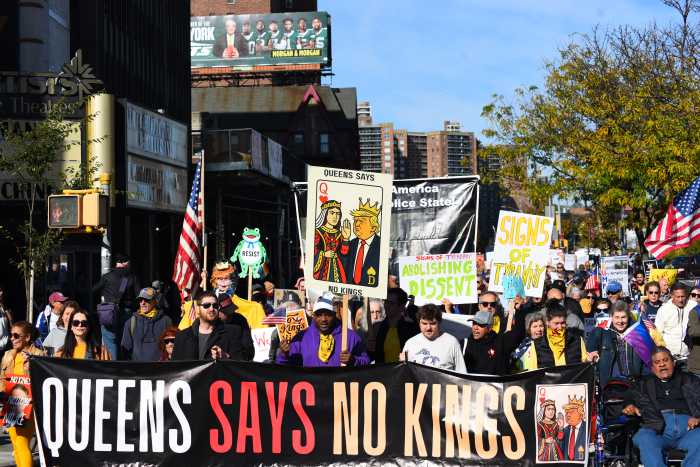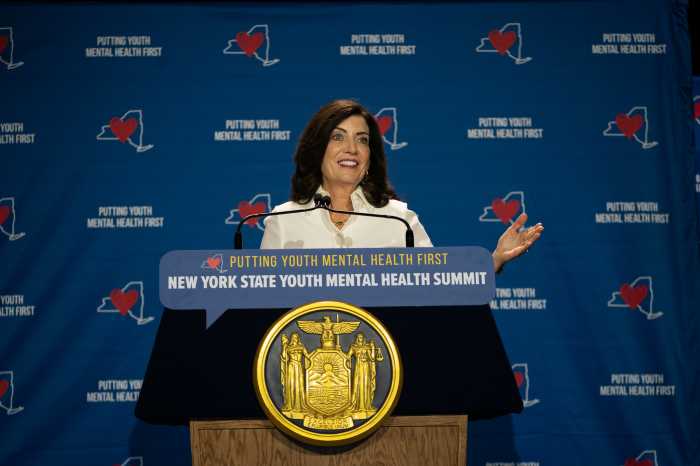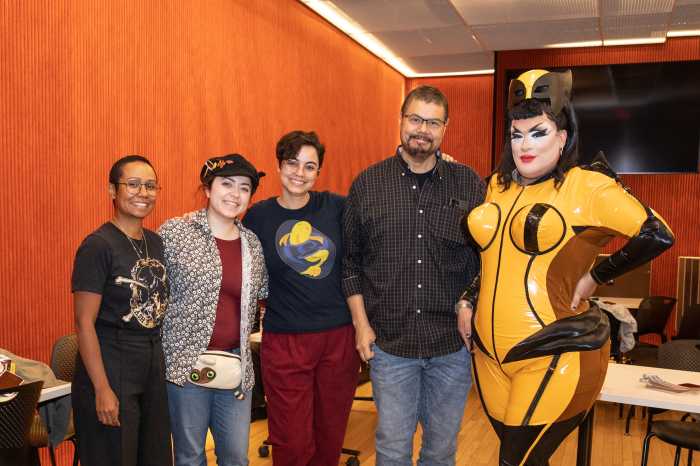Amid the eight nights of Hanukkah and less than a week before Christmas, Mayor Eric Adams issued updated guidance on Tuesday to help New Yorkers protect themselves during the holiday season from the so-called “tridemic” of COVID-19, the flu and respiratory syncytial virus (RSV) hitting the city.
“This year, particularly around the flu, the numbers are higher than it traditionally is around this [time of] year,” Hizzoner said during a health briefing at City Hall Tuesday afternoon. “When you combine it with the other elements that we’re facing, the other RSV’s, COVID-19, it just makes it extremely challenging for New Yorkers.”
City Health Commissioner Dr. Ashwin Vasan said the COVID case transmission rate over the past week is 300 per 100,000, which he said is a “fairly significant” transmission level. The increased COVID positivity rate, Vasan said, is mostly the result of people returning to their pre-pandemic routines.
“I think this is a product of the changing weather,” Vasan said. “It’s a product of increased social mixing and congregation around the holidays. And it’s a product of us getting back to some semblance of normalcy in the way that we move about the world and live our lives. So, some of this is to be expected, but it is something we’re watching very carefully.”
There has been a “demonstrative decrease” in RSV cases over the past few weeks and a slight “flattening” in flu transmission this week.
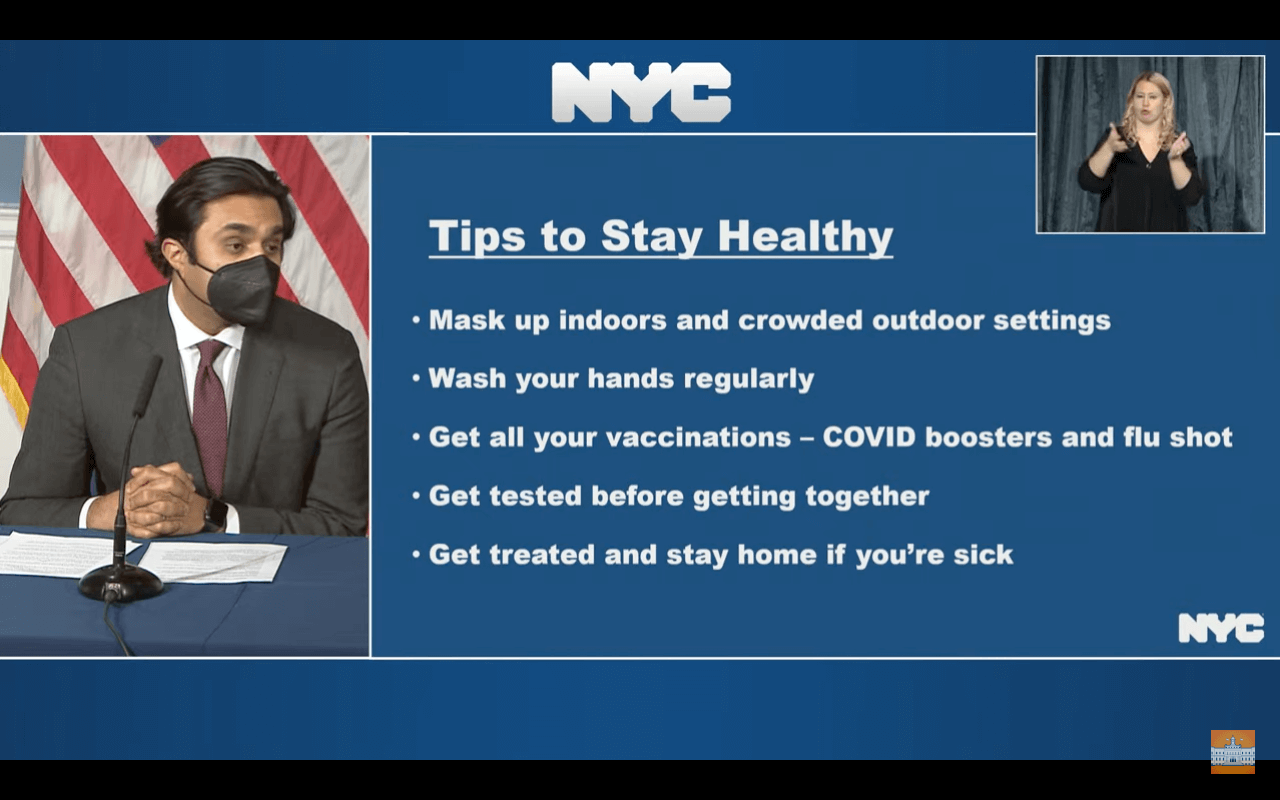
The mayor and Vasan announced several steps individuals can take to keep themselves and their loved ones safe from the triad of communicable diseases as they gather ’round the menorah or Christmas tree over the next week. The steps include wearing a mask indoors and in crowded outdoor areas; being up-to-date on vaccinations for COVID and the flu; getting tested before gathering with family; and receiving treatment and staying home if you feel sick.
“During the holiday season, we come together to be with our families and loved ones,” Mayor Adams said. “And during that time, we really need New Yorkers to hear the directions of how do we enjoy the holidays and spread love, without spreading the virus? And we could have that combination.”
Vasan said taking these precautions are particularly important when interacting with those who are at increased risk for complications from these viruses, including those who are 65 and older, immunocompromised or have an underlying health issue.
Additionally, the mayor announced children six-months through four-years-old can now get the bivalent COVID-19 at the city’s 11 public hospitals.
And, Adams said, testing for the flu and RSV, as well as the Tamiflu flu treatment, will also now be available at 50 of the 75 city Health + Hospitals mobile Test to Treat units across the city.
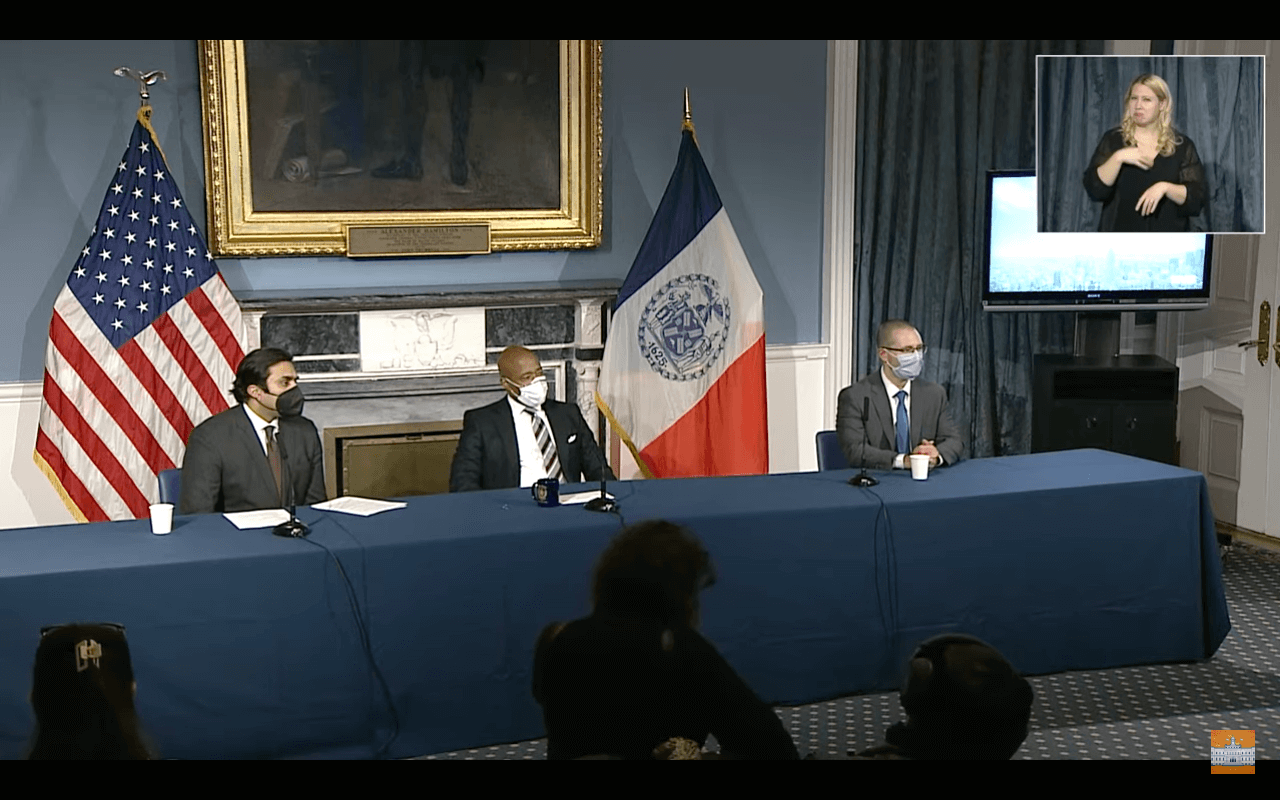
When it comes to making sure that hospitals have the necessary capacity in the case of increased hospitalizations, Vasan said the city’s medical centers currently aren’t experiencing staffing shortages, so it’s something the Health Department is closely tracking.
“Right now, the vast majority of the 49 reporting hospitals in New York City are not reporting severe staffing shortages in either the ER or and pediatric hospital beds,” Vasan said. “But we have some spot issues, so this is something we’re monitoring really closely. We’re nowhere near the kinds of staffing issues we faced in previous waves of COVID, but it is something we’re trying to get ahead of.”
